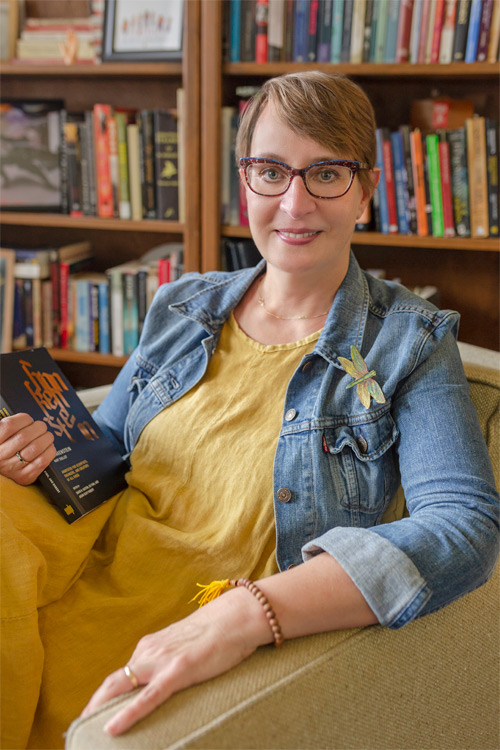Frankenstein Story’s Meaning Is More Than Monstrous, Professor Says
By: Phil Roth | Oct. 17, 2018

Dr. Sabrina Starnaman
On the 200th anniversary of the publication of Mary Shelley’s Frankenstein, a UT Dallas professor said the book is much more than a scary Halloween story.
According to Dr. Sabrina Starnaman, clinical assistant professor in the School of Arts and Humanities who teaches a class about the book, Frankenstein offers a thought-provoking look at science and ethics.
“While one might think that a class on Frankenstein would be all horror and shadows and gasps, I would argue it’s a class asking some of the most pivotal, pointed human questions,” said Starnaman, ”including questions about the responsibilities that creators or scientists have to their creations or their science.”
Shelley wrote Frankenstein when she was 19 years old, and it was published the following year in 1818. The book tells the story of Victor Frankenstein, a young scientist in search of the secret of life who creates the monstrous creature in a secret experiment.
Starnaman said the representation of the Frankenstein creature has shifted a great deal from the original monster in Shelley’s book.
“When people dress up as the Frankenstein creature, they usually dress up like the Frankenstein character from the 1931 movie, with the flat head and the bolts, which is not in any way what’s in the book. If people dressed up as characters from the book, we wouldn’t recognize them,” she said.
While dozens of movies about the creature have been made since the early 1900s, Starnaman said many people would be surprised by the original book.
“It’s an incredibly well-written book, and it seems to touch people who read it. My class has 90 students in it. There was a part of me that wondered if today’s students would read and get excited by an early 19th-century novel,” she said. “And they do. They find it beautiful.”
“While one might think that a class on Frankenstein would be all horror and shadows and gasps, I would argue it’s a class asking some of the most pivotal, pointed human questions.”
Dr. Sabrina Starnaman, clinical assistant professor in the School of Arts and Humanities
Starnaman said Frankenstein is thought by many to be the first science fiction novel.
“Victor Frankenstein had this great idea that his creation would thank him and would honor him and would be glorious. And when his creature came to life, he found it grotesque and monstrous and terrifying,” she said. “Mary Shelley was not just exploring the technological questions, but also the human questions.”
In her class, Starnaman uses a version of Frankenstein that is published by MIT Press. Besides the original text, the book includes annotations and essays that explain the science behind the story and explore the social and ethical aspects of scientific creativity.
In addition to studying Frankenstein, the class also explores other writings that raise similar scientific questions — such as the play R.U.R. by Karel Čapek, which involves the creation of artificial human workers that look like people, and Frankenstein in Baghdad, by Ahmed Saadawi, an Iraqi novel about a city torn apart by war and foreign occupation and the pieced-together creature that arises to avenge its citizens.
Starnaman said Frankenstein, though, is a text that is timeless, noting that there are still modern-day headlines and references that analogize the story.
“It is used to talk about any kind of scientific advancement that we worry will have unintended consequences,” she said. “The idea of creating something that ends up going beyond the intention or being more than the creator can handle — or that has social implications — is extremely familiar to us and one that is often used to question the ethical implications of advancements in science.”
Media Contact: Phil Roth, UT Dallas, 972-883-2193, phil.roth@utdallas.edu, or the Office of Media Relations, UT Dallas, (972) 883-2155, newscenter@utdallas.edu.





